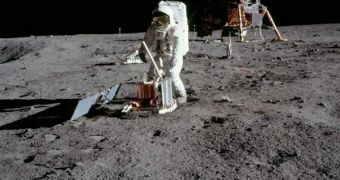More than 40 years after the Apollo missions delivered scientific equipment to the surface of the Moon, those instruments continue to yield new discoveries, especially when the data they do or did send back are analyzed with modern-day computing power.
Such is the case with information collected by seismic sensors installed on the Moon in the 1970s, during a variety of Apollo missions. The goal of the experiments was to gain more insight into the structure of the lunar core.
Signals sent back by the sensors were processed years ago, but with the top scientific and IT capabilities of the day, which were nothing compared to the ones we have today. As such, a team of experts decided to redo the analysis using modern computers.
According to the new data, it would appear that the lunar core is indeed layered, and that the formation is indeed hard and round. This makes it very similar to our own planet's central region, scientists say.
It is also very likely that the Moon's core is surrounded by a layer of molten rock, similar to Earth's mantle. However, unlike our planet, the satellite may also feature an additional layer in its interior.
This could be a ring of magma made of partially melted material, that could be located around the outer sections of the core, seismologists explain, quoted by Space. The sensors that collected these data were installed between 1969 and 1972, and operated until 1977.
“The data itself has been in continual use since the Apollo era,” explains scientist Renee Weber, th lead author of the new research effort. He is based in Huntsville, Alabama, at the NASA Marshall Space Flight Center (MSFC).
“The moon's deepest interior, especially whether or not it has a core, has been a blind spot for seismologists. The seismic data from the old Apollo missions were too noisy to image the Moon with any confidence,” adds Ed Garnero.
The researcher holds an appointment as a professor at the Arizona State University (ASU) School of Earth and Space Exploration, and was also a member of the team that conducted the study.
Details of the new discoveries, which are derived after using new earthquake analysis techniques on the decades-old Moon data, were published in the January 7 issue of the top journal Science.
Scientists say that deploying additional seismic sensors on the Moon, and processing the data they beam back with modern capabilities, could lead to a better understanding of the way Earth's natural satellite is organized.
The studies could also provide additional insight into how the object formed, which may in turn be useful towards explaining how Earth itself appeared.

 14 DAY TRIAL //
14 DAY TRIAL //